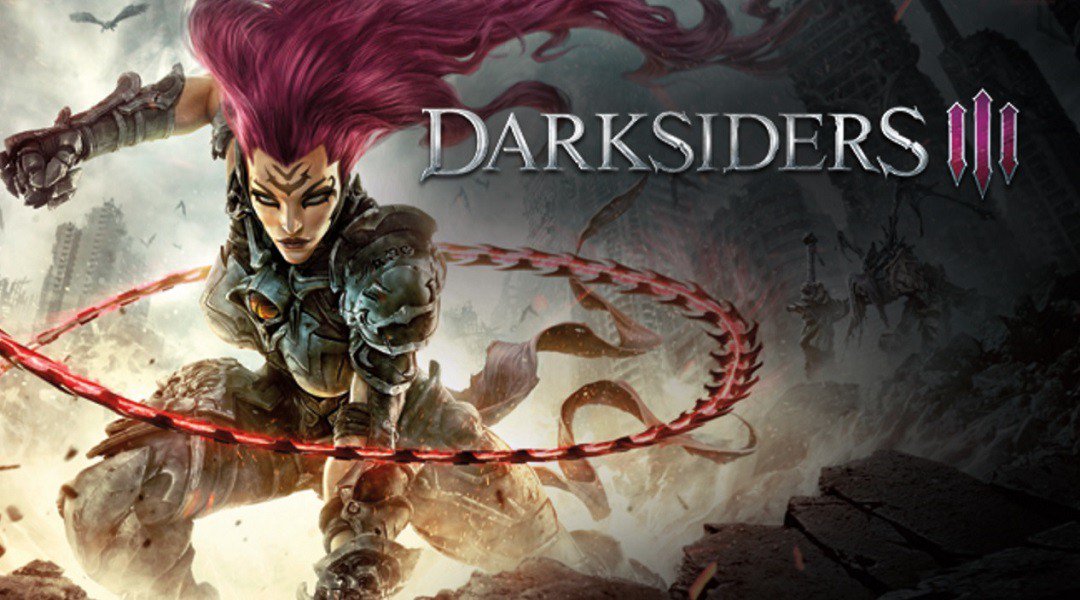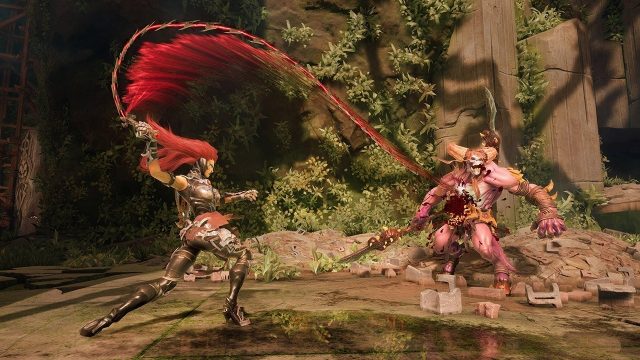
The Darksiders franchise has had an interesting life so far, and not just because of its first publisher’s difficulties. After all, this is a series that kickstarted a tale that was supposed to be spread out over at least four different games, with each one having its own Horseman of the Apocalypse as its main character. It was a lofty goal, indeed, and something that we’re still not sure will come to full fruition. Here’s hoping it will, though, because as unabashed as this series is, it’s always been something that has been fun to jump into and get immersed within.
It was in 2010 that the first Darksiders game released, providing us with an almost perfect length action/adventure game that unabashedly borrowed elements from Zelda and God of War. The joint effort between comic book writer Joe Madureira, developer Vigil Games and publisher THQ did so with style, though, and ended up being one of my favourite games of not only that year but of the last generation as a whole. Although its production values weren’t at the absolute top of the class, Darksiders was an incredibly immersive, fun and standout game for me, which really captured my attention. Hell, while some will say that I’m committing a gaming sin just for saying this, I must admit that I enjoyed it more than Bayonetta, which I rented and completed around the same time.
Two years later, Vigil Games returned with Darksiders II, which told a parallel tale that featured Death as its protagonist instead of War, who had been falsely accused of breaking the final seal and starting an early apocalypse. That sequel didn’t keep things the same as they were before, and while it wasn’t as fantastical or as good as its predecessor, it was still a rather impressive title. Reason being is that, instead of sticking to a more open world adventure, Darksiders II focused more on dungeons and did so to a fault. Its loot system was a nice addition, its combat was fun, and it had some great moments, but the dungeons’ repetition got to me after a while and kept me from enjoying it as much as the first game. Still, it remained one of my favourite titles of that year.
What followed were financial difficulties that unfortunately sunk a longtime publisher in THQ, which had fallen victim to failed ventures. This left Darksiders, as a property, in limbo and made many unsure as to whether we’d ever see the third Horseman’s story, let alone that of the fourth. However, thanks to Nordic Games, who’ve since purchased a lot of THQ’s licenses and even rebranded themselves as THQ Nordic, we’ve now received the third of four intended stories.
Dubbed Darksiders III, this new entry focuses on Fury, the third of four and the only female in the group. Told as somewhat of a parallel story, it sends players on an almost Metroidvania-esque adventure through earth and other realms. One in which War, who’s seen in shackles, is shown within the opening cutscene.
After speaking to the Charred Council and cracking a couple of quips at War’s predicament, Fury is tasked with going after the Seven Deadly Sins within a post apocalyptic version of the aforementioned realms. Fury is joined on this quest by a female watcher, who sometimes chimes in but often gets in trouble for speaking. Together, they explore an overgrown and destroyed earth, which has become the home of a giant life tree and also has more than its fair share of scattered vehicles, before plunging into the underworld and other environments. All the while, one should be on the lookout for branching paths, hidden secrets and humans in need of saving. By that, I mean humans who are hiding from the demons who stalk nearby, and who can be teleported back to the safety of a forge just by touching one of Fury’s amulets. There, they’re protected by massive dwarves (I believe), who can also upgrade the player’s weapons and weapon enhancements if the proper materials are handed over.
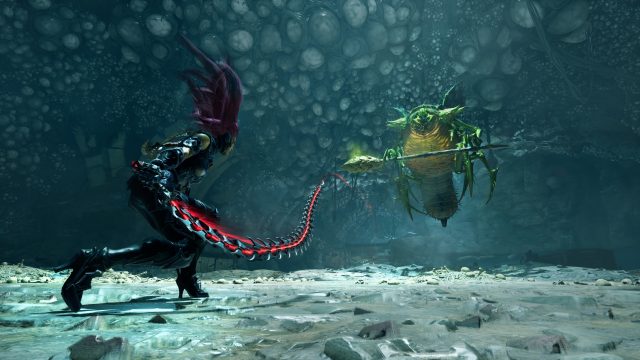
Stepping aside from the more traditional melee weapons of the past couple of games is Fury’s whip, the Barbs of Scorn, which acts as her primary damage dealer. It has decent range, has a nice colourful effect and also does some elemental damage whenever the player times their dodge absolutely perfectly. This is the weapon that remains locked to X attacks and acts as your primary attack, but it is not alone. In fact, as they progress players will be given several elemental weapons, such as fire-engulfed chains, an electric lance, a powerful mallet and another throwable weapon. The idea here is that these different weapons are infused with different hollows, such as a flame hollow, storm hollow and force hollow, and each one is tied to its respective elemental hollow. You can switch from one to another by holding a shoulder button and then pressing a face button, and their attacks then become tied to the Y button.
As expected, given the setup, it’s good to pick and choose different weapons for different situations, or to main one that you prefer and level it up well in the process. Certain weapons are better for certain things, like the throwable ones being good at picking hanging enemies off. Their elemental effects also come in handy whenever you get a perfect dodge and retaliate right away, or charge them up before attacking, which is often easier said than done. Furthermore, each one gives Fury a different ability, like an explosive triple jump (fire hollow) or the ability to float for a very short period with the storm hollow.
That said, Darksiders III isn’t as fluid in terms of combat as one would hope. Its many encounters can be visceral, frenetic and action packed, but it’s harder to chain different weapon types than it should be, and the difficulty is sometimes pretty cheap. Unfortunately, the team at Gunfire Games (which is made up of some former Vigil employees, who previously worked on Darksiders II’s Deathinitive Edition) took inspiration from the Soulsborne games. The result is something that can be quite frustrating due to its cheap difficulty and related spikes. Enemies can hit hard, and it can be difficult to avoid their sweeping attacks even with a pretty well timed dodge. A perfect dodge is often required, and that’s simply unfair given how small the window for those happens to be. Thus, you’re often left vulnerable to attacks despite doing everything you can to get away, and it doesn’t help that a lot of foes can chain attacks together and take you out before you even have a chance to do anything.
This wouldn’t be so frustrating if the game didn’t punish you for using items or special attacks before dying. You see, Fury can collect shards that give her small or average healing, extra defense, added fury (which gives her a power and elemental advantage for a short period), and the ability to be resurrected upon dying. There is also a special power, wherein after filling a meter, Fury can turn into a large scale creature that deals tons of elemental damage, but doesn’t seem to hurt bosses much for some reason. If you use any of those things before dying, they won’t be returned to you upon respawning at the nearest Vulgrim portal. As such, you’re left at a greater disadvantage for the next attempt, especially since those shards cannot be picked up twice.
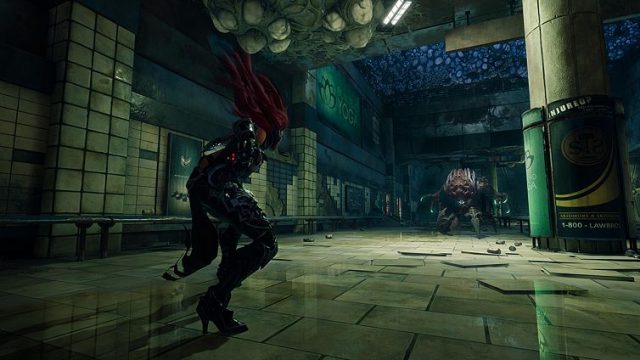
The same is true of Darksiders III‘s souls, which act as its currency. Dying means losing all of the souls you’ve collected, though sometimes the game will take pity on you and return some of them if you get back to where you last perished. The answer to this is to double back and bank souls with Vulgrim whenever possible. He exchanges not only items and enhancements, but also skill points, for those souls. Skill points, then, can be used to upgrade your health, attack power and elemental damage, with freedom that allows for player choice.
I focused on health more than anything else and am glad that I did given how punishing enemies and bosses often are, even on normal.
As mentioned, Vulgrim acts as a checkpoint as well as a shopkeeper. He’s spread throughout the game world, and you’ll come across him a good amount. That said, his locations can be far between, meaning that dying can set you back 10 minutes or so. This is frustrating to say the least, but at least the things you’ve done (like solving puzzles, moving objects or that kind of thing) remain manipulated and don’t need to be done again. Enemies, meanwhile, always replenish after death and must be fought again or avoided completely by running past them.
Vulgrim is usually found close to bosses, but that isn’t always the case and sometimes some backtracking is required after dying against one of the Seven Deadly Sins, all of whom have been given disturbing characterizations. The bosses themselves are generally alright, but that said they’re also nothing special and feel like they would’ve been at home in a game of this ilk from a decade or more ago. Truth be told, though, a lot of Darksiders III feels that way. It feels like a character action/adventure game that could’ve been released on the Xbox 360 and PS3, but I’m pretty okay with that aspect because I’ve always liked those types of experiences and have missed some of them.
This difficulty and homage to Dark Souls may turn some off. It certainly hurt the game in my eyes, because I’ve never been a fan of those titles and don’t like to play games that are (in my eyes) unfairly difficult. This is added to by the short dodge window (which has gotten a bit better with the recent patch, I must say), and the fact that you’re left vulnerable while dodging unless you do so perfectly, meaning right at the correct moment. Hell, Fury is also left vulnerable when she heals, because there’s a delay in-between when one presses up on the d-pad to heal and when she actually accomplishes the task.
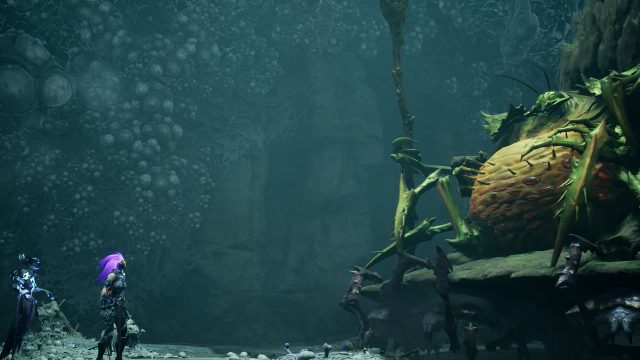
Speaking of healing, there’s something I should mention. While I noted that you can find and use shards to heal, that isn’t always the case. Darksiders III actually gives Fury a special healing power called Nephilim’s Reprieve or something to that extent. The amount that one can carry at one time can be increased through items and upgrades, but the only way to replenish them is to get lucky during battle and have a dying enemy leak a green soul, or die. Thus, some will find dying and respawning at Vulgrim to be a good tactic, and that isn’t great design.
Truth be told, it truly feels like Darksiders III suffers from an identity crisis and as if it doesn’t really know what it wants to be. In some ways, it feels like the previous games, and has listed combos that promote being a badass. Then, on the other hand, there’s the frustrating difficulty and the cheap enemies that complement it, who make it hard to play like that. The result is a game that makes you hit a few times, then dodge away and repeat the process, or at least try to. If the Dark Souls influences were not there, this would’ve been a much better experience.
When you’re not fighting or exploring on the ground level (which often involves crouching through tunnels and solving very basic puzzles, like leading bugs to eat explosive gel before throwing them at nearby webbing, or moving floating jellyfish-like creatures to create platforms), you’ll be doing some light platforming. Fury can use her whip to swing off of horizontal poles or the bottoms of chandeliers, and can also use her elemental abilities to her advantage. This may involve triple jumping to set spiderwebs on fire, then rushing to and standing on a switch so that the fire hits a crystal to open a nearby door. Sometimes, it’ll also involve finding, moving and then hitting swords so that they chime at the same time. Or simply hitting two crystals at once to lower a bridge, triple jumping up to a high ledge or that type of thing. The puzzles and platforming are pretty basic, and while the triple jump doesn’t always work as well as it should (because Fury sometimes doesn’t grab properly or doesn’t get high enough unless you do it perfectly), it makes sense and works for the most part. Hell, there’s even a bit of swimming and some walking within water going on.
Players can teleport from one Vulgrim portal to another, too, which allows for one to go back and explore previous areas using new abilities. This can help one find secrets and humans, but the truth is that this isn’t as much of a Metroidvania as one might think. It has backtracking and secrets, but not as many as a lot of those games seem to, and it doesn’t feel as necessary. The puzzles, as mentioned above, also aren’t as intricate or interesting.
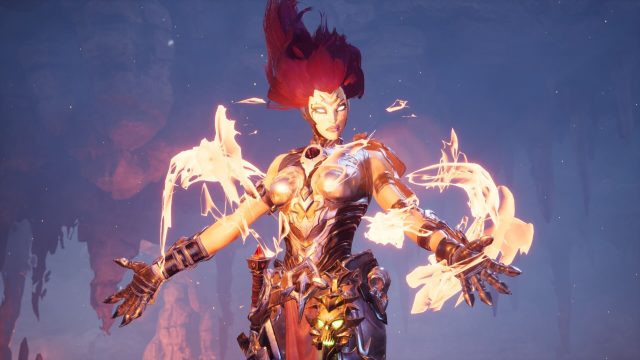
This isn’t much of a spoiler, either, but there’s also no horse for a large portion of the game, unlike in Darksiders II. Although her horse was shown in a prerelease music video, Fury’s steed actually dies right near the start of Darksiders III and its death is one of the things that pushes her forward, towards answers. That’s because the creature was her only companion for some time, and she seems to have actually cared deeply about it despite her rough exterior and sharp personality.
Fury’s story is interesting, but it’s not going to win any awards like the rest of the game. I like her as a character, and think that she has an interesting personality and drive, but I also liked both War and Death quite a bit in the previous two games. Then again, Darksiders has simply been one of my favourite series since it released, and while it borrows from other properties without hiding it or being ashamed of that, that doesn’t bother me because the games are fun, the characters are interesting and the story is always intriguing. This remains the case here, for the most part. Even if an obvious Dark Souls inspiration hurts Darksiders III and leaves it as my least favourite of the three games, I’ve still enjoyed my time with it and kept coming back despite the frustration of cheap deaths, annoying checkpoints and an uneven difficulty level.
This review was completed with the Xbox One X version of the game, and I played it both before and after its day one patch. Even with the patch installed, Darksiders III has technical issues that unfortunately mar it. For instance, the game likes to insert (thankfully short) loading icons at random intervals, and these pause the game while you’re walking, jumping, or exploring. There’s no warning, it just happens. Furthermore, Gunfire Games’ latest has performance issues that cause its frame rate to suffer, and this seems to keep happening in the same spots, even when there’s not much happening. I’ve also had the game fail to load after a death, and had a problem where it wouldn’t start after downloading the patch. Thankfully, turning the system and the external hard drive off and then back on seems to have fixed it.
What’s good in this department is that the game is colourful and fantastical, and that it looks and feels like the first one in several ways. Also, its impressive orchestral music, decent sound effects and solid voice work. What’s not as good is that it has two faces. At times, it looks really nice and is a lot of fun. Then, at other times, it looks dated, has mediocre textures and feels like a game that was released a decade ago.
Simply put, Darksiders III is a bit on the rough side. It suffers from an identity crisis, is more frustrating than it should’ve been, and has unfortunate performance problems. Still, it’s a very colourful and rather immersive game that I find pretty easy to get lost in whenever I’m not cursing it.
Here’s hoping that this game will sell well enough to allow for the fourth Horseman to share its story. Also, that said potential fourth game will be less like Dark Souls than this one is.
**This review is based on the Xbox One X version of the game, which we were provided with.**

